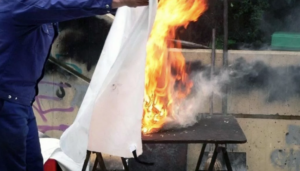
CPR performance mistakes for beginners
Everyone makes mistakes, but knowing how and when to avoid certain things can go a long way toward successful outcomes. In many cases, mistakes can prove fatal. 5 Common CPR Performance Mistakes for Beginners and How to Avoid Them
For example, if you are new to CPR, you may worry about getting it wrong. However, the opposite is true. By learning the common CPR performance mistakes that novices make, you can do everything in your power to protect the person needing CPR.
If you feel unsure about your performance, continue reading for the most common CPR performance mistakes for beginners.
1. Not Following the Correct Sequence
Not following the correct sequence is one of the most common mistakes for those just starting to learn CPR. This will include checking for responsiveness, calling for help, opening the airway, doing two rescue breaths, and performing 30 compressions.
Beginners tend to accidentally skip steps or do the steps out of order, which can be very dangerous. To avoid this, thoroughly learn each of the steps and practice them by regularly reviewing a demonstration video.
2. Starting With Too Few Compressions
One of the common mistakes that many beginning CPR performers make is starting with too few compressions. This means that they start their compressions with less than the recommended 100 to 120 per minute as required for Adult CPR and 60 to 80 for pediatric CPR.
Another way to make sure that you are administering the right amount of compressions is to place the bottom palm heel of the hand flat against the victim’s and compress to a depth of about two inches, approximately 1/3 to 1/2 the depth of the victim’s chest.
3. Giving Too Many Breaths
Giving too many breaths is a common mistake with new CPR practitioners. Taking a second to double-check that the seal is tight and the breaths are at the right rate and depth can help avoid this mistake.
To ensure the seal is tight, occasionally check for air leaks and adjust the CPR hand placement if needed. Instead of hastily pushing the air in, use a slower and deeper breath for maximum efficiency.
4. Delaying Breath Administration
When performing CPR, many beginners make the mistake of delaying the administration of breath, which can have serious consequences for the patient. Breath administration is an essential part of CPR, as it helps to ensure that oxygen is being efficiently delivered to the body.
To avoid this mistake, it’s important to be aware of the different parts of the emergency medical chain of command. Beginners should practice and review the proper technique, paying special attention to when breath administration should be executed.
5. Underestimating the Importance of Practice
Effective and efficient CPR performance mistakes for beginners require knowledge of the proper techniques and coordination, which is best achieved through practice. Common mistakes for beginners in CPR include not positioning the patient’s chest correctly, not performing compressions of the appropriate depth, and not doing compressions at a sufficient speed.
To avoid these mistakes, it is important to practice on a regular basis. Practicing with a mentor or role-playing with friends or family is a great way to become skilled in the process and correct any mistakes before performing on a real patient.
Learn more from this CPR training class and get certified to avoid these mistakes when performing CPR.
Read More About CPR Performance Mistakes for Beginners
It is important for everyone to have a basic understanding of CPR and what to avoid if providing aid. CPR performance mistakes for beginners should be avoided by seeking proper instruction and training and taking time to practice.
Did you find this article helpful? Check out the rest of our blog for more!








